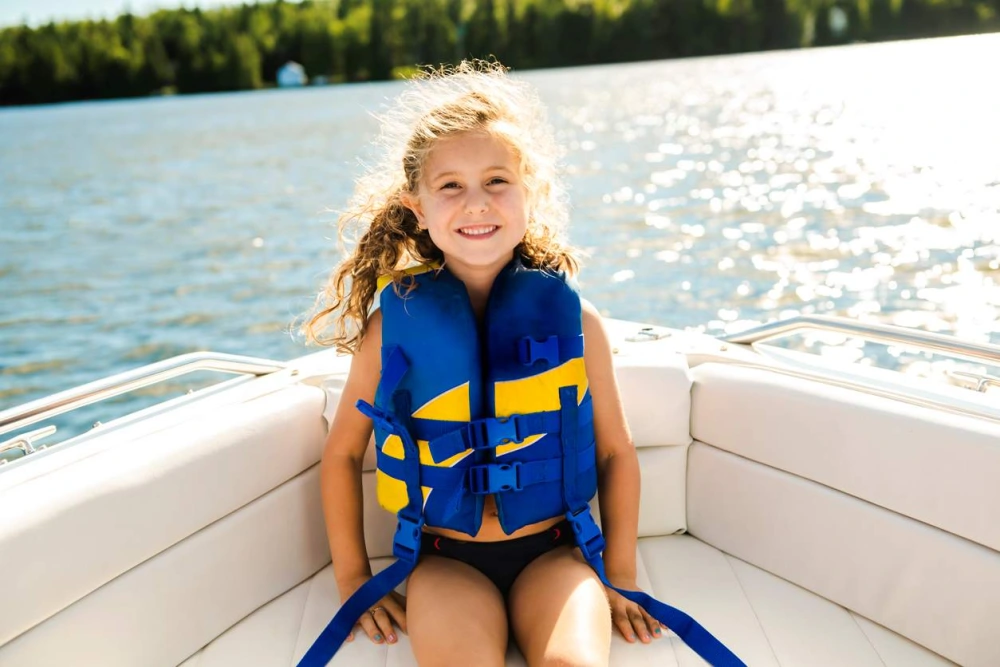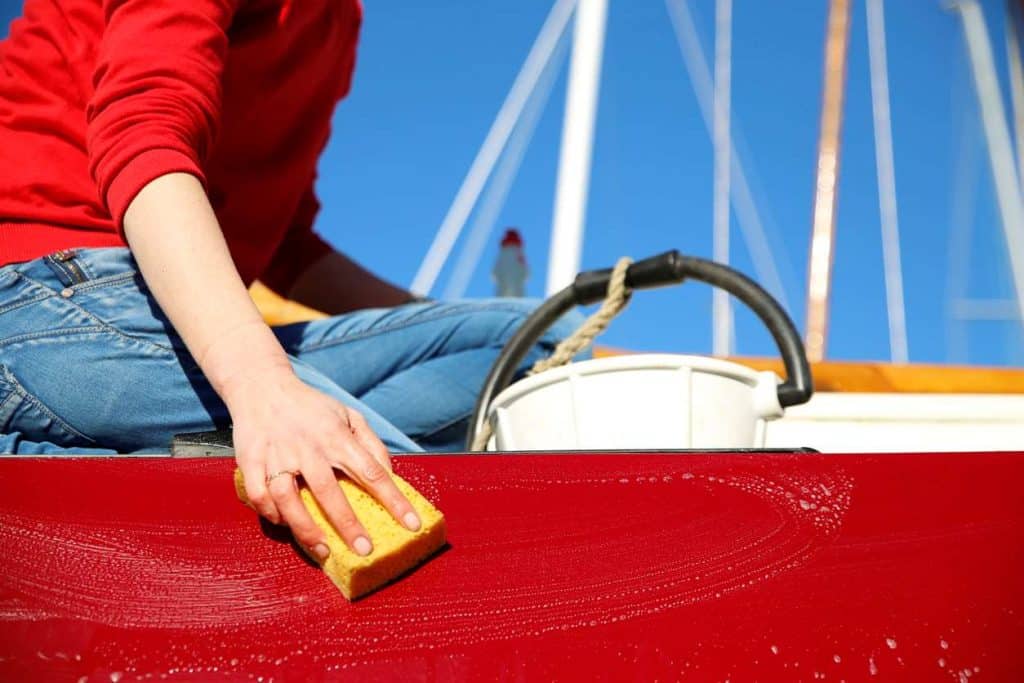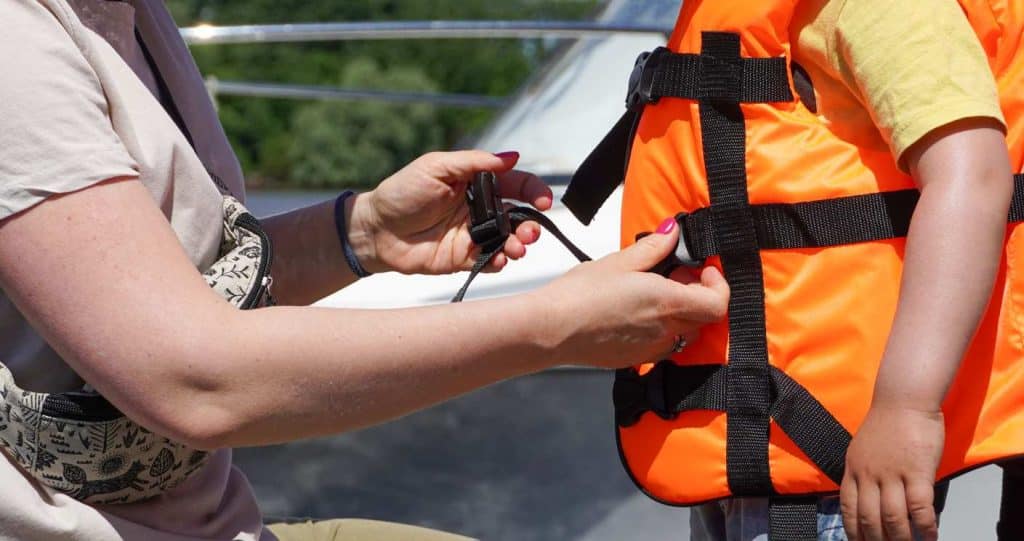5 Boating Tips to Stay Safe on the Water

5 Boating Tips to Stay Safe on the Water
Picture a perfect summer day, where the sun is shining, the breeze is blowing, and the lake is beckoning you to come out and play. It’s the ideal setting for an unforgettable boating experience with your friends and family. But before you embark on your aquatic adventure, it’s crucial to be well-versed in boating safety tips to ensure your journey is not only memorable, but also secure.
With 11.88 million recreational boats registered in the U.S. alone, it’s unlikely you’ll be the only boat on the water. That’s why it’s incredibly important to be aware of the water safety tips that will help you stay protected in the deep blue as you set sail for a great time.
5 Water Safety Tips When Boating
Your jet ski, sailboat, kayak, or yacht is the trusty steed that will take you on a journey of discovery. Think of it as your very own sea creature that needs to be treated with the utmost respect and care.
With our handful of essential boating safety tips, you’ll be able to navigate your vessel with confidence, no matter where your adventurous spirit takes you. To stay prepared, take note of the following essential water safety tips that will keep you and your fellow seafarers safe and sound.
#1: Wear a Life Jacket
The most important boating safety tip is to always wear a life jacket. The United States Coast Guard requires that all boats carry an appropriate number of approved life jackets. It’s also recommended to have your passengers wear them, especially children and weaker swimmers.
Not only will it keep you safe from drowning if you fall overboard, but it will also provide some extra warmth and buoyancy if needed.
If your vessel is 16 feet or longer, it must have at least one Type I, II, III, or V personal floatation device (PFD), as well as one Type IV throwable device. For boats shorter than 16 feet, you only must carry one Type I, II, III, or V PFD for each person aboard. Make sure that every Personal Flotation Device is in good condition and has a Coast Guard Approval Number.
We know it can be a little confusing when looking at all the different types of PFDs, so here’s a quick rundown:
- Type I PFD (also known as an off-shore life jacket) offers the highest degree of buoyancy and is useful in all types of water, particularly in situations where it may take longer for rescue to arrive. These devices are engineered to flip even an unconscious wearer face up and onto their back in the water.
- Type II PFD (near-shore buoyant vest) is suitable for use in calm, still bodies of water or in areas where prompt rescue is likely. You will often see these being worn while tubing, wakeboarding, or other watersports near the shore.
- Type III PFD (also known as floatation aids) are very similar to Type II devices, but are better suited for calm, inland waters.
- Type IV PFDs (throwable devices) are designed to be thrown to someone who is in the water. The idea is that the person in the water is able to grab it and hold onto it until they are retrieved.
- Type V PFDs (special use devices) are meant for specific activities that may be labeled on the device. Inflatable vests, deck suits, work vests, board sailing vests, or hybrid PFDs fall into this category. For the most part, they are designed to be comfortable and unobtrusive. These devices can only be used in accordance with the approved conditions designated on their label.
#2: Check the Weather Forecast Before Setting Out
As much as you want to have a perfect day out on the water, it’s crucial to check the weather forecast before setting sail. Weather conditions can change rapidly, and it’s best to be prepared and informed of any potential risks.
It’s essential to keep an eye out for changes in wind patterns, thunderstorms, lightning, and sudden temperature changes. Make sure you have access to the latest weather updates and keep an eye on any warnings or advisories issued by local authorities. If you find something that’s concerning, it’s better to err on the side of caution and stay in port. Do not take any unnecessary risks when it comes to weather patterns.
Remember, it’s always better to play it safe and reschedule your boating trip for another day if the weather is looking ominous. Your safety and those around you should always be your top priority.

#3: Follow Navigation Rules and Regulations
Navigation rules are not only there to keep you safe, but they’re also in place to ensure that everyone else who is out on the water remains safe as well. Make sure you familiarize yourself with all local and federal regulations before setting sail.
Some of the most basic boating safety regulations you should know are:
- Always maintain a safe speed and give larger vessels the right of way.
- Ensure that navigation lights are on at night, as well as in periods of reduced visibility.
- Stay within the marked channels when navigating near shorelines or other navigational aids.
- Avoid congested waters and always keep a lookout for other boats, swimmers, and any objects in the water.
Remember: following navigation rules is not only important to keep everyone safe on the water, but it also serves as a good reminder of how to be an overall courteous boater.
#4: Always Have Proper Safety Equipment on Board
In addition to wearing a life jacket, it’s important to have all the necessary safety equipment on board before you set sail. This includes items such as a first aid kit, fire extinguisher, distress signals, and a tool kit.
- A first aid kit should include bandages, antiseptic wipes, and any necessary medications. Fire extinguishers should be kept in easily accessible areas, and all passengers should know how to use them in case of an emergency.
- Distress signals, such as flares or an emergency radio, can be essential if you need to call for help. Make sure they’re in good working condition and that you know how to use them.
- A tool kit should also be on board, containing items such as a wrench, pliers, and duct tape, which can be useful for minor repairs.
The number of items may seem overwhelming, but it’s better to be over-prepared than under-prepared when it comes to safety equipment.
#5: Avoid Alcohol and Drugs
It’s no secret that alcohol and drugs impair your judgment, reaction time, and coordination. When out on the water, these impairments can have dangerous consequences. In fact, alcohol is the leading contributing factor to fatal boating accidents.
A lot of people may think it’s okay to consume alcohol while on the water as long as the ocean and rivers are far away enough from shore, but this is not true. Even if you’re far away from the coast, alcohol can still impair your judgment and reaction time, making it difficult to respond quickly to any potential risks that may arise.
We know it’s tempting to crack open a couple of beers on the boat or enjoy a few mimosas while out fishing. However, if you want to ensure your safety, it’s best to avoid drinking and drugs altogether while on the water. Just like when driving a car, consuming any amount of narcotics can impair your ability to make sound decisions while operating a boat and put yourself and others in danger.
If you do plan on drinking, make sure to have a designated driver or wait until you’ve returned to shore. You never want to find yourself in a situation where you’re unable to react quickly in case of an emergency.
Keep Yourself and Others Safe with These Boating Safety Tips
Boating is a great way to relax and have fun, but it’s also important to take safety seriously. With the help of these boating tips, you can make sure that everyone on board is having a good time while staying safe.

Boat Storage With RecNation
Nothing feels better than setting sail on the open water, but not everybody has the time or the ability to get out there as much as they would like. That’s why RecNation offers a premium covered boat storage solution that provides the security, convenience, and peace of mind needed when storing your valuable vehicle.
We also offer a full range of services, including the ability to sell your RV or boat with us. With RecNation Storage, you can rest assured that your vehicle is in good hands while you’re away.
Find your nearest RecNation to begin storing your boat today.
